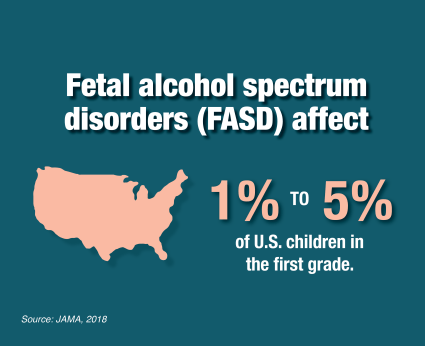Alcohol and Pregnancy in the United States
Image

- According to the Behavioral Risk Factor Surveillance Survey (BRFSS)—a survey of more than 400,000 people by the U.S. Centers for Disease Control and Prevention—during 2018–2020, nearly 14% of pregnant people ages 18 to 49 reported current drinking.1
- Also according to BRFSS, during 2018–2020, about 5% of pregnant people ages 18 to 49 reported binge drinking in the past 30 days.1
- According to 2022 data from the National Survey on Drug Use and Health (NSDUH)—a survey of more than 71,000 people by the Substance Abuse and Mental Health Services Administration (SAMHSA)—11.0% of pregnant women ages 15 to 44 in the United States used alcohol in the past month.2
- The 2022 NSDUH also found that 5.3% of pregnant women ages 15 to 44 in the United States reported binge drinking in the past month.2
- A study supported by the National Institute on Alcohol Abuse and Alcoholism of more than 6,000 children in first grade across four U.S. communities estimated that as many as 1% to 5% of first-grade children have fetal alcohol spectrum disorders.3
According to SAMHSA, many (but not all) NSDUH estimates from 2022 are comparable with estimates from 2021, as along as updated 2021 estimates, presented in the 2022 Detailed Tables, are used. Please see the 2022 NSDUH Frequently Asked Questions for more information.

